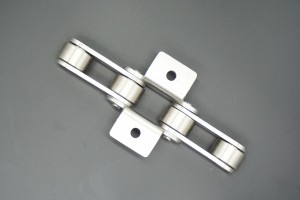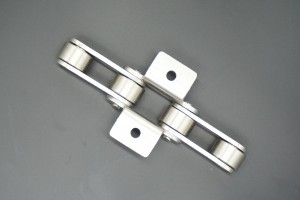Roller chains are an important component in a variety of industrial applications, providing reliable and efficient transmission of power and motion. There are several key factors to consider when choosing the right roller chain for your specific industrial application. From understanding the different types of roller chains to evaluating environmental conditions and load requirements, choosing the right roller chain is critical to ensuring optimal performance and longevity.
Types of roller chains
Before delving into the selection process, it is important to have a basic understanding of the different types of roller chains. The most common types include standard roller chain, heavy-duty roller chain, and double-pitch roller chain. Standard roller chains are suitable for general industrial applications, while heavy-duty roller chains are designed to handle higher loads and provide greater strength. Double pitch roller chains, on the other hand, are ideal for applications requiring longer pitches.
In addition to these basic types, there are also specialty roller chains such as corrosion-resistant chains, accessory chains and hollow pin chains, each designed to meet specific application requirements. Understanding the differences between these types of roller chains is critical to making an informed decision.
environmental considerations
The operating environment plays an important role in determining which roller chain is best suited for an industrial application. Factors such as temperature, humidity and exposure to chemicals can affect chain performance and service life. For example, in high-temperature environments, heat-resistant roller chains are critical to preventing premature wear and elongation. Likewise, in corrosive environments, corrosion-resistant roller chains are required to ensure long-term reliability.
It is important to evaluate the environmental conditions in which a roller chain will operate and select a chain specifically designed to withstand these conditions. This proactive approach helps prevent premature failure and minimize maintenance needs, ultimately saving costs and improving operational efficiency.
load requirements
Another key factor to consider when selecting a roller chain is the load requirements of the application. Understanding the magnitude and nature of the load the chain will be subjected to is critical to selecting a chain with the appropriate strength and durability. Heavy-duty applications such as mining equipment and conveyors require roller chains with high tensile strength and fatigue resistance to withstand harsh operating conditions.
In contrast, standard roller chains are adequate for light-duty applications as long as the load requirements are within the specified limits of the chain. It is important to carefully evaluate the load characteristics, including static and dynamic loads, shock loads, and any potential overhung loads, to ensure that the selected roller chain will effectively meet the application needs.
Maintenance and lubrication
Proper maintenance and lubrication are critical to maximizing roller chain performance and service life. When selecting roller chains for industrial applications, it is important to consider maintenance requirements and the availability of suitable lubrication methods. Some roller chains are designed to be low maintenance and operate effectively in environments where frequent maintenance is not possible.
Additionally, selecting a roller chain that is compatible with the proper lubrication method, whether manual lubrication, an automatic lubrication system, or a self-lubricating chain, can significantly impact the chain’s life and overall performance. Understanding lubrication requirements and ensuring that the roller chain selected meets these requirements is critical to achieving optimal performance and minimizing downtime.
Installation and alignment
Proper installation and alignment are critical factors affecting roller chain performance and service life. When selecting a roller chain for an industrial application, it is important to consider installation requirements and ensure that the chain can be installed correctly and aligned with the sprockets. This includes evaluating factors such as shaft misalignment, tensioning methods, and potential misalignment during operation.
Choosing a roller chain that is easy to install and align can simplify the installation process and minimize the risk of premature wear and failure. Additionally, choosing a chain that is compatible with existing sprockets and drive components is critical to ensuring smooth operation and preventing unnecessary wear on the chain and sprockets.
in conclusion
In summary, selecting the right roller chain for your industrial application requires careful consideration of a variety of factors, including chain type, environmental conditions, load requirements, maintenance and lubrication, and installation and alignment. By understanding the specific needs of your application and selecting a roller chain that meets those needs, you can ensure reliable performance, minimize downtime, and maximize chain life. Whether it’s a standard roller chain for general industrial use or a specialized chain for demanding applications, making an informed decision is crucial to achieving the best results.
Post time: Jun-19-2024


